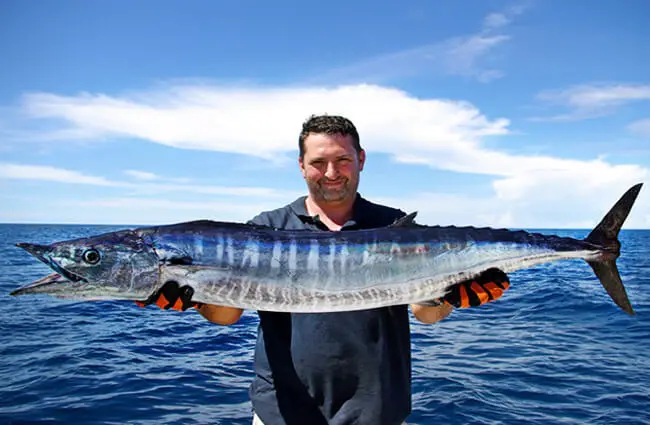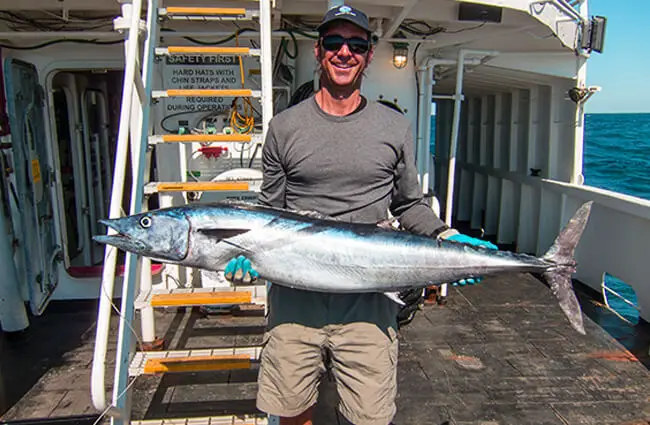The Wahoo: A Striking Predator of Warm Waters
The wahoo, Scomberomorus cavalla, is a fascinating and sought-after fish, renowned for its incredible speed and delicious flavor. Often called “the Ferrari of the sea,” this sleek predator holds a unique place in marine ecosystems and human cultures. This comprehensive guide delves into every aspect of the wahoo, from its natural history and behavior to its interactions with humans and its role in the ocean.

Natural History and Identification
The wahoo is a member of the mackerel family, Scombridae, and is easily distinguished by its elongated, cylindrical body and iridescent blue‑green coloration. This striking color provides excellent camouflage in the open ocean. Mature wahoo often exhibit a pattern of dark vertical bars or spots, though this can vary. A defining characteristic is its rigid second dorsal fin, which is not retractable like those of many other mackerel species. Wahoo can reach impressive sizes, typically growing to around 6 to 10 feet in length and weighing between 8 and 150 pounds, though larger specimens have been recorded.
Habitat and Distribution
Wahoo are pelagic fish, meaning they inhabit the open ocean rather than coastal waters or reefs. They are found in tropical and subtropical waters worldwide, including the Atlantic Ocean, Gulf of Mexico, Caribbean Sea, and Indo‑Pacific regions. They prefer water temperatures between 77 and 86 degrees Fahrenheit. Wahoo are often associated with floating objects, such as seaweed rafts, driftwood, or man‑made structures, which provide shelter and attract prey. They are known to undertake long migrations, following warm currents and prey aggregations.

Diet and Hunting Strategies
The wahoo is a voracious predator, feeding primarily on fish, squid, and crustaceans. Their diet includes smaller tuna, mackerel, flying fish, and various schooling species. They are ambush predators, utilizing their incredible speed to overtake prey. Wahoo can reach speeds exceeding 60 miles per hour, making them one of the fastest fish in the ocean. Their streamlined body and deeply forked tail fin contribute to their exceptional swimming ability. They often hunt in pairs or small groups, coordinating their attacks to corner and capture prey.
Evolutionary History
The evolutionary history of wahoo, like many pelagic fish, is somewhat difficult to trace due to limited fossil records. However, genetic studies suggest that wahoo diverged from other mackerel species millions of years ago. Their streamlined body shape and high‑speed swimming ability are likely adaptations to a pelagic lifestyle and the need to pursue fast‑moving prey. The development of their rigid second dorsal fin may have enhanced their hydrodynamic efficiency and stability during high‑speed pursuits.

Reproduction and Life Cycle
Wahoo are broadcast spawners, meaning they release eggs and sperm into the water column for external fertilization. Spawning occurs throughout the year in warmer regions, with peak activity often coinciding with seasonal upwelling events. Females release millions of eggs, which are pelagic and drift with ocean currents. The eggs hatch into larvae, which undergo a period of planktonic development before metamorphosing into juvenile fish. Wahoo reach sexual maturity at around two to three years of age. Little is known about the specific mating behaviors of wahoo, but it is believed that they engage in complex courtship displays.
Ecosystem Role and Interactions
Wahoo play an important role in marine ecosystems as apex predators, helping to regulate populations of smaller fish and invertebrates. They are preyed upon by larger predators such as sharks, marlin, and tuna, though their high speed and agility make them difficult to catch. Wahoo often form aggregations around floating objects, creating localized hotspots of biodiversity. These aggregations attract a variety of other species, including seabirds, dolphins, and sea turtles. Wahoo also contribute to nutrient cycling by consuming prey and excreting waste products.

Wahoo and Human Interactions
Wahoo are highly prized by recreational anglers for their speed, fighting ability, and delicious flavor. They are a popular target species in game fishing tournaments and are often caught using trolling, jigging, and live bait techniques. Commercially, wahoo are harvested using longlines, gillnets, and trolling gear. The meat is highly sought after in many cuisines, and is often served as sashimi, grilled, or fried. However, overfishing and habitat degradation pose threats to wahoo populations in some areas.
Conservation Status
The International Union for Conservation of Nature (IUCN) currently lists wahoo as “Near Threatened.” While not currently endangered, populations are declining in some regions due to overfishing and habitat loss. Sustainable fishing practices and effective fisheries management are essential to ensure the long‑term survival of this remarkable species. Marine protected areas and efforts to reduce bycatch can also help to protect wahoo populations and their habitat.
![This Wahoo was caught in the Gulf of Mexico NOAA/NMFS/SEFSC Pascagoula Laboratory; Collection of Brandi Noble [Public domain]](https://animals.net/wp-content/uploads/2020/02/Wahoo-4-650x425.jpg)
Encountering Wahoo in the Wild: A Guide
For anglers, finding wahoo involves targeting areas with strong currents, temperature breaks, and floating debris. High‑speed trolling with brightly colored lures is a common technique. Be prepared for a powerful strike and a fast, exhilarating fight. For divers or snorkelers, encountering wahoo is less common but possible around floating objects or seamounts. Maintain a safe distance and avoid sudden movements. If you encounter a wahoo, observe it respectfully and appreciate its beauty and power.
Caring for Wahoo in Captivity
Maintaining wahoo in captivity is challenging due to their active lifestyle and large size. A very large tank or enclosure is essential, along with a powerful filtration system and regular water changes. Providing a varied diet of fresh fish, squid, and crustaceans is crucial. Wahoo require plenty of swimming space and should be provided with enrichment items to stimulate their natural behaviors. Care must be taken to minimize stress and maintain optimal water quality.

Fascinating Facts About Wahoo
- Wahoo are known as “ono” in Hawaii, meaning “ready to eat.”
- They can change color slightly in response to temperature and light.
- Wahoo have a high concentration of omega‑3 fatty acids, making them a healthy food source.
- They are capable of achieving speeds exceeding 60 miles per hour.
The wahoo is a truly remarkable fish, a testament to the power and beauty of the marine world. Understanding its natural history, behavior, and ecological role is essential for ensuring its long‑term survival and appreciating its contribution to the health of our oceans.

![Red Angus Closeup of a beautiful Red Angus cowPhoto by: U.S. Department of Agriculture [pubic domain]https://creativecommons.org/licenses/by/2.0/](https://animals.net/wp-content/uploads/2020/03/Red-Angus-4-238x178.jpg)




![Red Angus Closeup of a beautiful Red Angus cowPhoto by: U.S. Department of Agriculture [pubic domain]https://creativecommons.org/licenses/by/2.0/](https://animals.net/wp-content/uploads/2020/03/Red-Angus-4-100x75.jpg)

